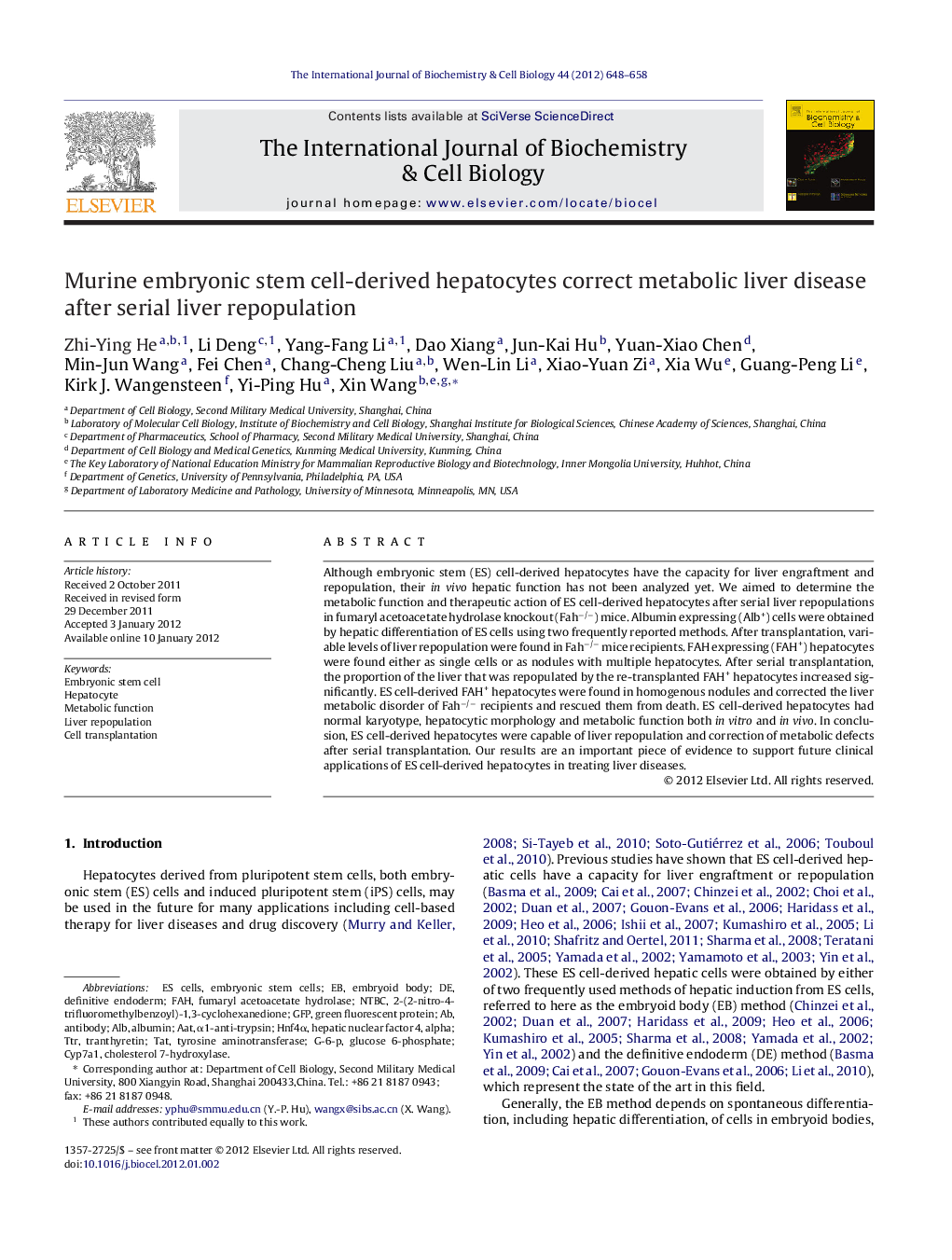| Article ID | Journal | Published Year | Pages | File Type |
|---|---|---|---|---|
| 1983870 | The International Journal of Biochemistry & Cell Biology | 2012 | 11 Pages |
Although embryonic stem (ES) cell-derived hepatocytes have the capacity for liver engraftment and repopulation, their in vivo hepatic function has not been analyzed yet. We aimed to determine the metabolic function and therapeutic action of ES cell-derived hepatocytes after serial liver repopulations in fumaryl acetoacetate hydrolase knockout (Fah−/−) mice. Albumin expressing (Alb+) cells were obtained by hepatic differentiation of ES cells using two frequently reported methods. After transplantation, variable levels of liver repopulation were found in Fah−/− mice recipients. FAH expressing (FAH+) hepatocytes were found either as single cells or as nodules with multiple hepatocytes. After serial transplantation, the proportion of the liver that was repopulated by the re-transplanted FAH+ hepatocytes increased significantly. ES cell-derived FAH+ hepatocytes were found in homogenous nodules and corrected the liver metabolic disorder of Fah−/− recipients and rescued them from death. ES cell-derived hepatocytes had normal karyotype, hepatocytic morphology and metabolic function both in vitro and in vivo. In conclusion, ES cell-derived hepatocytes were capable of liver repopulation and correction of metabolic defects after serial transplantation. Our results are an important piece of evidence to support future clinical applications of ES cell-derived hepatocytes in treating liver diseases.
